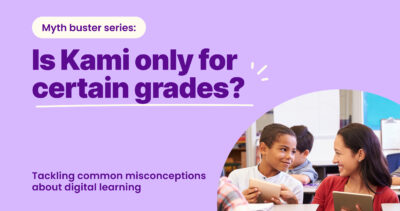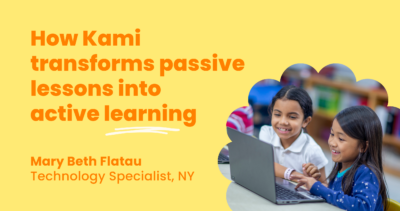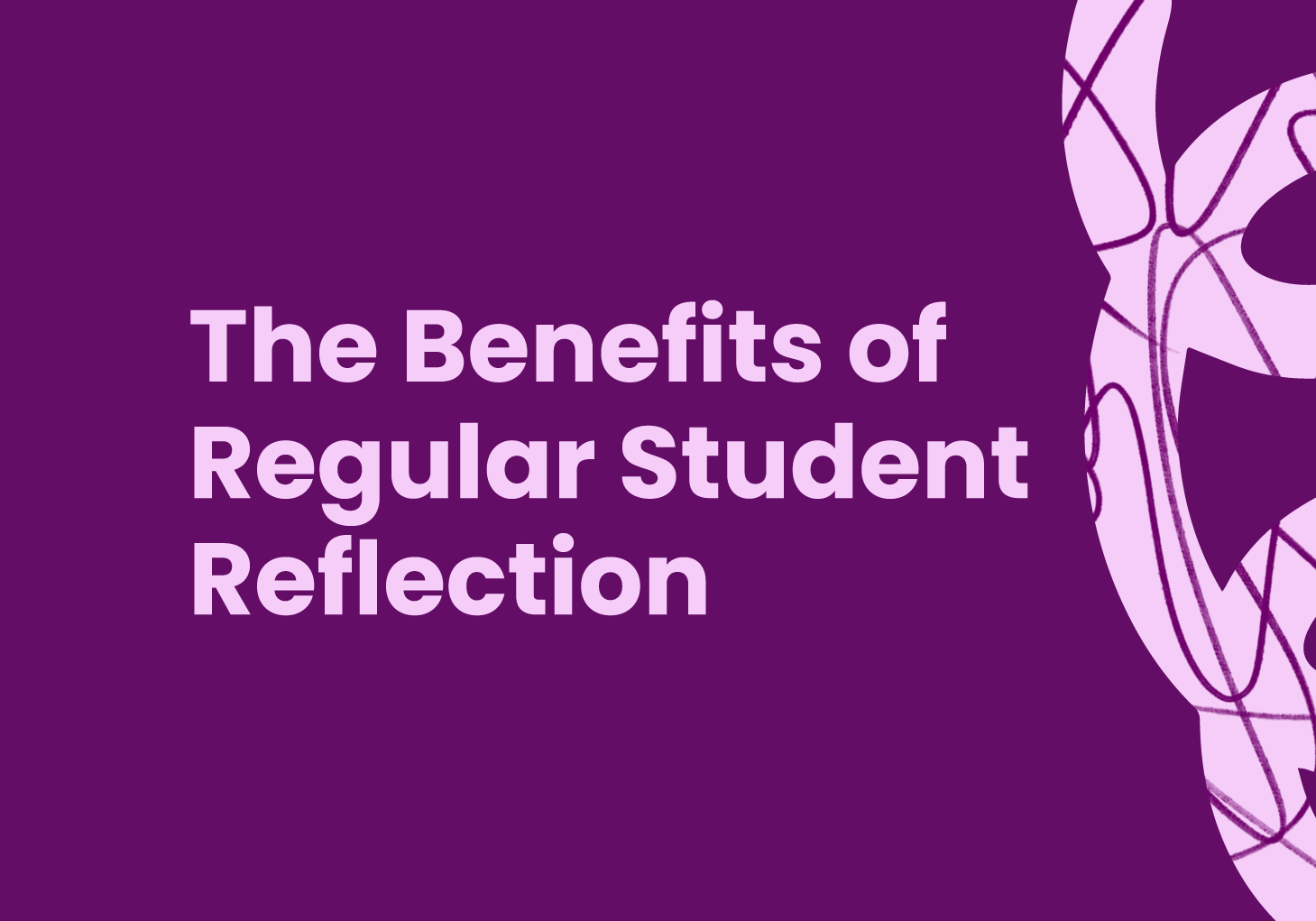Shirin Bradfield
Let your students lead their learning by finding out what they want to achieve and how you can help them get there.
Find ready-made teaching templates for student reflection over at the Kami Library!
Student reflection is such an important part of the learning journey; not only to help students understand and acknowledge the work they’ve achieved and the progress they’ve made, but to get to know themselves as learners too! The benefits of reflection will impact all students: elementary, middle school, or high school.
One of the easiest ways to encourage frequent student reflection and critical thinking is to set and evaluate goals throughout the year. Goal setting puts students in charge of their own learning experience; gets them invested in reviewing their assessment results; and boosts metacognition to help set achievable goals for growth and improvements. Once students set their goals, you’ll be able to better direct learning with tailored lesson plans and informed check-ins, rather than prescribed methods that may not work for every student.
Something we often get caught on, however, is treating goal setting and student reflection as an event only, rather than something that should also be considered daily – when part of a regular routine, the benefits of reflection can be felt through more positive student outcomes and general class culture!
So what are some teaching strategies to help make student learning through self-reflection a regular thing?
Think little picture
We want our students to aim for the stars when it comes to what they want out of a school year, but with larger goals comes fewer check-ins. Incorporating short-term goals—as simple as daily goals—will automatically give you a reason to reserve more time for reflection activities or moments of critical reflection (not to mention a bit of a brain break!).
To lead the way for successful daily goals, make sure you first explain your lesson’s learning target; this way, students will know how to identify what they might need to focus on most. Student reflection can easily be done at any time throughout your lesson, both individually or in small groups depending on your classroom dynamic. If students hit their goals, they’ll get an instant sense of accomplishment. If they didn’t, it can be taken, instead, as an opportunity to assess how they need to shift what they did do to ensure a successful outcome next time.
Keep them quick
When setting short-term goals, frequent check-ins are critical, but they should also be kept low-stake. As the goals themselves are relatively simple, they shouldn’t feel overwhelming or consume the entire lesson. So to keep your student reflection sessions easy-breezy, your reflection questions are key! Keep them straightforward and open-ended; focus on questions framed around “What?” “So what?” and “Now what?” to encourage a growth mindset and constant building.
You could ask your students things like:
- What did you do well today?
- What was the most important thing you took from today?
- What did you appreciate the most today?
- What do you still need to learn more about?
- What are you most interested in learning about next?
Keep WIPs
Students might not realize just how far they’ve come (or the benefits of goal setting) without actually seeing, through their own work, just how much they’ve progressed. One of the easiest ways to do this is by making process portfolios one of your regular class activities.
Process portfolios are a powerful tool to support reflection, as they won’t only include their best work, but the process work that got them there, and even the work that wasn’t initially successful. Because of their nature, students need to update their process portfolios frequently, otherwise, they won’t able to identify how they’re tracking towards any desired outcomes. Another bonus of an up-to-date process portfolio is the fact that students are more able to easily identify their personal process of learning: what worked best for them, and what didn’t.
Ease into it
Learning can be complicated enough for students without imposing a reflection of the learning on top of it all. Goal setting and student reflection activities can be seen as additional work and this could easily drop student motivation or dedication to the practice. So instead of making it more of an event by scheduling sessions for your reflection activities, make it part of the work or routine itself. So, rather than stopping completely or saving it exclusively for the end of the lesson, rather incorporated it as part of the work. Simply prompt students to “respond in their portfolio” or take reflection notes as they learn to ease the habit in.
Setting goals and reflection sessions are powerful ways to improve your students’ learning outcomes, as well as their social-emotional learning and self-regulation skills. These will always be hugely beneficial as milestone events with yearly goals to reflect on; however, as teachers, you’re not only aiming to positively influence how students are within your four classroom walls, but also outside of them during day-to-day life. Instilling student reflection as a daily practice through quick wins, portfolios, and goal setting will not only improve learning outcomes for your students but mindfulness and self-awareness too.
You may also like

Myth buster: Kami is only used by certain grades

Educator insights survey 2025

